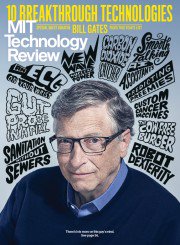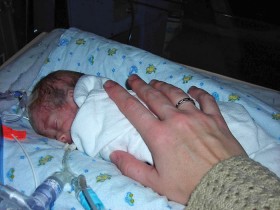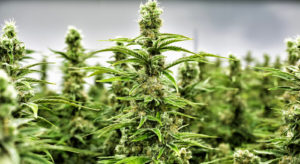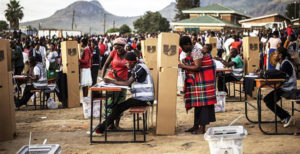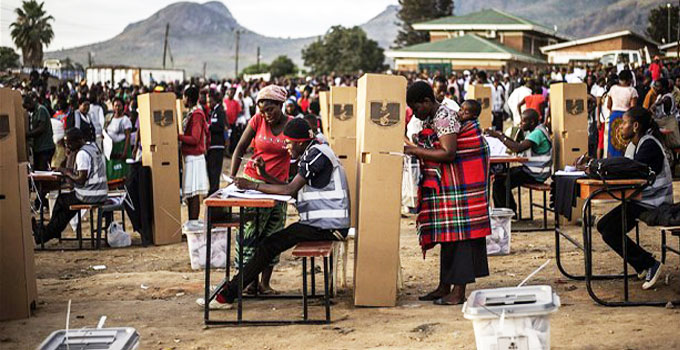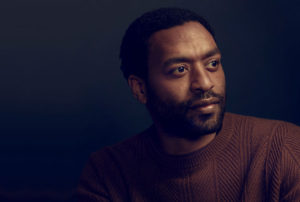
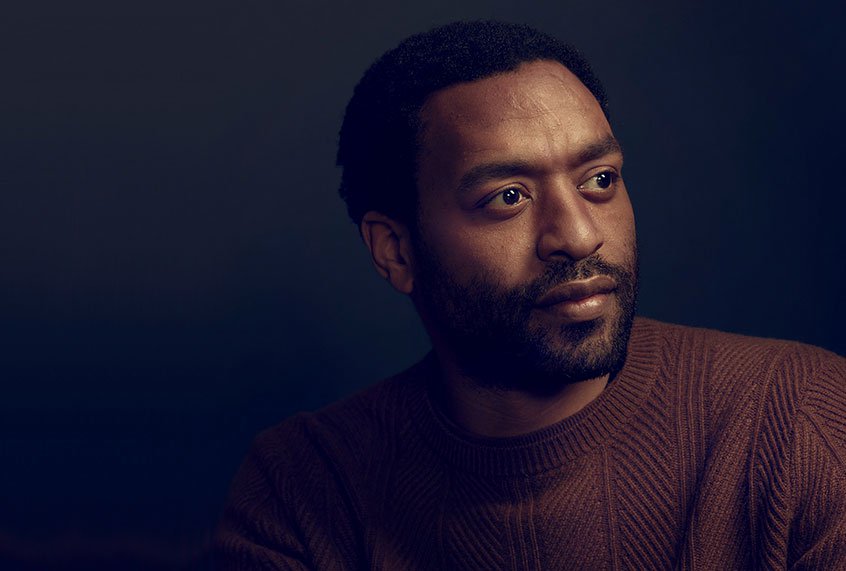
Academy Award-nominated actor Chiwetel Ejiofor joined me on “Salon Talks” to discuss the nearly 10-year process of directing his first feature film, “The Boy Who Harnessed the Wind,” streaming on Netflix and showing in select theaters on March 1. Ejiofor also wrote the screenplay and stars in the film, which is set in Malawi and based on a true story.
Adapted from the bestselling memoir by William Kamkwamba and Bryan Mealer, “The Boy Who Harnessed the Wind” tells the story of Kamkwamba at 13, forced to drop out of secondary school in Malawi because of his family’s financial struggles. He ends up inventing an unconventional way to save his family and village from famine by building a wind turbine that creates electricity.
Ejiofor traveled to Malawi to shoot the film, and once mixed in with the people, he absorbed the culture and learned to speak Chichewa. His film represents Malawi in an authentic, beautiful way by honing in intimately on one family’s story. It will probably make the people of Malawi proud, which was very important to Ejiofor. To me, his careful approach is the optimal way to portray and showcase cultures that are not our own.
When he sat down with me at Salon this week to about the film, Ejiofor sparked a much-needed conversation about how society is quick to box people in by the culture they belong to. There’s only one Malawi in Africa, and it’s not the same as Nigeria, or Egypt — each is equally unique and special in its own right and deserves to respected as such. Generalizations about Africa are disrespectful and do nothing but promote false and dangerous stereotypes.
My friends and I never heard anything positive about Africa growing up. I remember seeing racist cartoons of tribal men, or what looked like sharecroppers on Looney Toons, back in the day. We learned nothing about the continent in school. Meanwhile, the older beer drinking dudes who hung by the lobby in my aunt’s projects, mainly Boof, would say things like, “Dem Africans hate us and they stink just like their jungle country!” I know he’s a fool now, but as kids, we were just listening to the adults.
We didn’t have rebuttals. There weren’t any people from any part of Africa living in my neighborhood. Collectively we weren’t exposed to positive representations of Africa or any of its beautiful countries. It wasn’t until high school that I met a friend, Jol, who taught me differently.
She was Nigerian — Yoruba to be exact — and moved to Baltimore from West Virginia as a tenth grader. One day we were all hanging by the same lobby where the older drunks had boozed, and the conversation about Africa surfaced. I started with joking about 7′-7″ former NBA player Manute Bol, who’s from Sudan. We all dived into our bag of stereotypes until Jol was like, “You guys do know I’m from Nigeria.”
At first, I thought she was joking. We all did. No one believed her. She dipped off and stopped coming around us, so I knocked on her door one day and asked, “What’s up?” and she told me how she’s sick of everybody hating on Africa. So I started hanging with her without the rest of my crew and we became close. I learned about her family, their culture, history and how narrow our view of Africa was.
She introduced me to more Nigerians and I developed immense respect for them when I observed their honest work ethic. Nigerians are hustlers. The more time I spent with them, I learned that I was more African than American. I started going to Jol’s family functions and never missed the feasts her mom put on. My time with Jol forced me to quickly correct people like Boof who spread false ideas about Africa, treating the continent like it’s not the mother civilization but one monolithic place full of disease, famine and ignorance.
Stereotypes around Africa persist today, and I’m even witnessing it in the classroom.
“African Americans are lazy,” a young Nigerian student with a strong accent said during a communication class I taught a few years back at Coppin State University in Baltimore. “They have all the opportunities in the world, but they just want sell drugs and go to jail.”
All the African-American students attacked her with the same stereotypes I grew up with, while some of the students from the islands agreed.
“My family came here with nothing!” she countered. “And now my dad has two cabs, my mom is a nurse and I’m in college!”
“That’s actually not that impressive,” an African-American student replied. “My mom is a doctor, so what are you saying?”
I calmed down the group, and we moved into a more important conversation about putting people or groups of people into boxes. Ethnicity doesn’t determine destruction, failure or guaranteed success.
My Nigerian friends never boxed me in, but some of the students explained that this has been a very common experience they have had when dealing with immigrants. African Americans can be victims of the same kind of false stigmas that disrespect African and other immigrant POC cultures.
The fact is that people make these bad assumptions because they have no connection or exposures to cultures outside of their own. When you are fortunate enough to interact with another culture, the goal should be to learn all you can and absorb.
Ejiofor, a proud son of Nigerian immigrants who was born and raised in the UK and acts in American films, taught me that Malawi was beautiful because through “The Boy Who Harnessed the Wind,” he used his art to take me to place I have never traveled to. That one film doesn’t make me an expert on Malawi culture; however, it’s given a better understanding of that part of the world and I’m more complete for it.
Read our full “Salon Talks” conversation below, or watch it here.
Explain the title of the film for people who aren’t familiar with William’s story.
“Boy Who Harnessed the Wind” is a film that’s based on the memoir of William Kamkwamba, of the same title, and it tells his story of when he was 13 years old in Malawi in 2001 to 2002, and the circumstances of his life there in his very rural community. There was an impending famine situation based on a flooding that had happened, and then a drought — a kind of double whammy.
His community was sort of bracing for the impact of this as the prices of grain raised through the roof and they had a terrible harvest. He was taken out of secondary school, because secondary school isn’t free in Malawi, and they waited for this impending doom, essentially.
He started sneaking into the school, and started sneaking into the library, and trying to get into the library because he was very keen in science and technology and wanted to continue his studies. On one occasion, he went into the library and he found a book titled “Using Energy,” an American textbook. And on the front of it was a picture of a windmill, and so that’s what inspired him to start trying to pull together whatever scraps he could find and see if in these very challenging circumstances, he could build a wind turbine to help his community.
It’s such an inspiring story and it gives the viewer such energy: you feel like you can do anything if you put your mind to it, if you put in the actual work. Talk about Malawi. What was your experience like filming there?
I first went to Malawi in about 2009, 2010, just after the book came out. I’d written a first draft of the screenplay, and started to develop the film and I went out to do some research before continuing.
Your first trip was actually because of the book?
Yes, exactly. I was inspired to write the draft and then go out and meet William Kamkwamba. He took me around to Kasungu, which is the region that he’s from. He took me into Wimbe, which is the very specific village that he’s from. I met his family, his community, just a whole host of people. He was very generous with his time and that community was very welcoming.
Then I just started to travel the country. I wanted just to get a real sense of Malawi and so we went to the car and a couple of us—I had somebody had to help me with translation, if I needed it—and somebody else who was just helping me with logistics, and we just traveled around the country and got a feel for it really.
As an actor, you have an amazing, extremely diverse body of work. You’ve done everything from “Melinda and Melinda” to playing Frank Lucas’ little brother in “American Gangster.” How did you end up choosing this film to be your directorial debut?
Well, it was really just the book, just reading the book and understanding its layers and its complexity. On the surface of it, there’s a kind of beautiful simplicity to the story and to what William Kamkwamba did in that time, but as you sort of start to kind of peel the onion you realize just how complex this journey is and how it involves so many other, sort of, wider themes and ideas.
There are social ideas, there are geopolitical ideas, the relationship and the dynamics that we have to other countries in the world and economics and so on, and of course to the changing climate, and the environmental damage of deforestation and things like this. There just seemed to be a very wide platform to discuss a lot of different things within the context of talking about this very detailed, personal, interpersonal family dynamic centering largely on this father and son, and this sort of intergenerational discussion
You learned the language and everything too. You put some serious prep work in.
I wanted to create an environment where an audience is really invited into a kind of private space and to a very authentic world. Part of that for me was to learn Chichewa, which is one of the languages of Malawi that’s spoken in this region. Quite early in the process I knew that that’s what I wanted to do.
When I started to get the script translated, which I did with Samson Kambalu , who is a Malawian who lives in the UK and is a writer and is an artist, I was able to sort of get a groundwork in basic Chichewa and then to start to sort of learn the lines in the script.
Then when I was casting, we cast in Malawi as well as in Kenya and we cast Aïssa Maïga out of Paris, so those who didn’t speak Chichewa and those who did speak Chichewa would work together and we’d start to, sort of, work together as a little community.
As an artist you’ve had to learn how to perform within so many different cultures—the African culture in “The Boy Who Harnessed the Wind,” the culture of “American Gangster,” for example. There are so many different complexities inside the Black experience in general because if we’re keeping it all the way honest, race is a thing — people, they look at it and they talk about it. A lot of times, if you’re Black you’re put in a box. If you’re from some country in Africa, you’re just from Africa, as if Africa is just one place; as if it’s not so many different tribes and experiences. Is that something that you keep in mind for every role and every project?
Yeah, 100 percent, 100 percent. I am engaged and I love to be engaged and work and think about things that work in terms of the African diaspora, and the specifics of that. That is always something that I have gravitated to in my work.
I think that it’s such a rich template, and so many extraordinary stories and avenues and ways of telling stories, and epic stories, big stories, emotional stories, stories that really move and stories, such as this one that, I think, not only move, but inspire. And I think you’re absolutely right, that there’s so many specific details and cultural details that are rich and rewarding.
You know when I was looking at this film, and when I was trying to make this film, it was to me a deep dive into Malawian culture and the spirit of Malawi, and then the rural communities, understanding that I, as a young man and as I grew older I traveled back and forth to Nigeria very often, and to the rural communities in Nigeria at times. I had a sense of that kind of dynamic, and realizing that obviously Malawian rural community is very different, but there are some similarities.
And as you say, there is no generic Africa. There are some similarities, but there are also these distinctions; these differences, these kind of individual traits. So it was really [about] exploring those; finding what was specific about Malawi, what you fall in love with about this country and how this country in many ways creates this solution, that it’s the whole package. It’s not what people are, but who they are.
I feel like your film is going to help some of the big social generalizations, which is a problem because when they exist it prohibits social relations. It can be disrespectful and it can be harmful. What were the challenges of being a director? Instead of just having to worry about yourself as an actor, you now have to worry about all these different moving parts on set.
It’s a very steep learning curve and really understanding how much there is to take on board was pretty interesting. And then, on top of that we had the straight forward logistics. I’d made certain decisions very early in the process that had serious implications. I wanted to shoot in Malawi.
There haven’t been a lot of films made in Malawi and there certainly not been film of this scale made in Malawi. So there was no real infrastructure to make films in the country. That meant that we had to really bring in a lot of things. And so the kind of logistical concerns of getting staff and equipment from Kenya and getting equipment from South Africa was a big part of that process.
But that was offset, of course, because the passion and the energy and the depth of feeling from the people in Malawi was so strong that it really felt kind of empowering to all of us making the film. Obviously they were aware of William’s story and they were excited for us to be there. Like it’s a crazy circus just comes to town when you’ve got a film unit that is descending on a small village in Malawi, but it was really important that they got behind this.
While you’re acting in a scene, you have to be the director too and yell cut in the middle of a scene, right?
That is also really weird. That was actually, in a strange way, the most weirdly awkward part of the whole process because I felt like I still needed to keep the cut. I didn’t need to call action because the first AD calls action. The director can call action but doesn’t need to. But calling cut is quite important for the director to do and to kind of hold the right to do that in case you want to linger a shot, whether you want roll again, whether whatever. That means kind of coming out of character slightly. I think there’s kind of an awkward b-roll that is going to be cut together of me just coming out of character to say cut.
Now that you’ve directed a film, do you ever think about any of your films from the past and think I wish I would have directed that film or made it differently?
I actually didn’t think of it like that. I mean I definitely felt when I was going into the process that there were films that I had felt had really worked in certain ways because of decisions that had been made. Just understanding that is very useful going into the process of directing. Also, and equally useful, if not more useful, is the times when there are decisions that you didn’t think were great. And trying to sort of avoid making those kind of choices. Having had a lot of experience in film, that kind of vocational quality to approaching directing was really useful.
Education was an important theme in the film. I think that a lot of people are going to see it and feel the power—the power of reading, the power of thinking, the power of just being able to imagine a reality that you don’t live in. Was that one of your main goals?
Absolutely, 100 percent. The critical power of education can’t be underestimated. It is the difference between here and there if somebody wants it to be. I feel that it is a question of empowering young people to sort of, as William Kamkwamba did, identify the problems that he faces and identify the solutions to those problems and to live in the solution to the problems.
That’s one of the things that I thought was just so incredibly remarkable about him doing that and feeling that and working within that at the age of 13. I think it’s inspiring not only to people who of that similar sort of age group. I think it’s inspiring to everybody, to everybody that faces challenges, to nations that face challenges.
You have some people who will always say they like the book more than the movie or vice versa. How do you approach that as an artist? Because the book itself is amazing and did really well, but the film is special in a different way.
I think you need to take a bit of time to sort of analyze and really find what it exactly is that you like about the book. Of course you might like the story and that is great and broadly speaking you can relay the story in the film, but I think you’ve gotta kind of break it down thematically.
You’ve got to find out sort of very honestly for yourself, what is it about the book, what is it that it represents for you, and how do you then go about structuring that into a screenplay that is personal to you. You got to sort of take the book apart in a way and rebuild it as a sort of combination of you and it, as honestly as you can.
I think it would be great if schools gave the book to kids so they that could read it and be inspired by the story, but then actually be rewarded by seeing the film, so it’s like it’s two whole different things.
Yeah and they’d see what was similar and what were the differences. And it’d actually open up a little bit more of the conversation of how you go about structuring a screenplay as well.
Are you directing again? Is there something in your future?
Yeah, I certainly hope so. It’s been a very exciting process for me. And I was incredibly fortunate to find something that I was so excited by, that I stuck with for 10 years more or less you know, through the kind of peaks and troughs of that experience. And I think that’s what it needs really. I don’t need to spend that long, but it needs something that you really feel as passionate about.
Something in Nigeria, or something in the UK, what do you think?
Maybe. We’ll see. I think there is a lot of opportunities, basically. And I’m excited about pursuing them.
I was reading an interview that you did a while back, and you were talking about playing Othello as a young person and then revisiting the role as an adult. Do you feel like you’re able to convey certain emotions in a reverse way? Like, of course when you are young you don’t really understand jealousy and things like that the way you do when you get older. Are there certain things that you played as a young person that you feel like you couldn’t really do or redo, or certain energy that you couldn’t visit, or do all those life lessons add up and you get better with age?
That’s a great question. You know there’s a Bob Dylan line, I was much older then and I’m younger than that now. And I feel like sometimes that’s true for me as well that there are certain things that I did and I can look at and I can see that I did when I was younger that I don’t know what would be.
There would be something interrupting me now. There would be a neurosis that’s built in. There would be something a bit more kind of mannered or slightly harder to find. I would get in my way a little bit more. And I do see that with certain things.
I think, gosh, back then I was fearless and now, not so much. Other things you kind of grow with, you understand life more in a sort of more linear way and so you can get better.
Certainly, with Othello that was true that I felt that when I didn’t understand any of those emotions I couldn’t really be inside of the project. But then years later, I understood all those things.
You’ve accomplished so much. Do you care about awards and stuff like that or do they become just like whatever, afterthoughts?
I mean it’s never been comparable to the doing of it, to the actual engaging in the work and trying to push myself to just as far as I can go with the work, and how much I can get out of the work. I have found, and it might be a slightly a cliché, but I do find that it’s true nonetheless that the work is its own reward if it really sings, if it clicks with you, if you feel that it’s been accomplished well.
Don’t get me wrong, it’s fantastic to get awards as well but it’s not the kind of primary purpose.
Spike Lee got his first competitive Oscar this year, and a lot of us were extremely happy because we feel like he’s been snubbed for a very long time. But sometimes when I look at someone as accomplished as you, or as accomplished as Spike, I wonder does it really matter, do awards matter? You’re already recognized by your peers at such a high level and people are always flocking to the work. Then when you see Spike run on stage and jump on Samuel Jackson, it’s like yeah, it’s the thing!
Yeah, I mean I loved that. I loved that he was so happy. And it did make me reflect. I was like, I hope that if that ever happened to me I would be as happy as Spike because it made me happy that it meant so much to him. And I think that’s great. I think that’s positive that he cared.
You also have “The Lion King” coming out this year. Are you excited about that part?
Very excited. I mean, it’s amazing. As soon as I was asked, I was just kind of thrilled. It was an amazing original, and I think this is going to be incredible. I’m sort of first in line. I’m waiting like everybody else. I’m just really excited by it.

